I am new to Common Lisp and I am using SBCL, Slime and Emacs to learn.
While reading the book Common Lisp: A Gentle Introduction to Symbolic Computation, the author mentions the STEP tool which is helpful for debugging and able to do this:
It is not 100% clear if the italic text is coming from the author or the tool itself. Probably, just the author's comments.
However, even if I do not consider the italic, I am unable to generate descriptive info like this.
If I use just SBCL's REPL, I get:
* (step (if (oddp 5) 'yes 'no))
YES
If I use the REPL inside Emacs with Slime on, I get:
CL-USER> (step (if (oddp 5) 'yes 'no))
YES
The author says that:
Each implementation of Common Lisp provides its own version of this tool; only the name has been standardized.
If I try the same thing in Emacs/Slime with a function, I get more info:
(defun my-abs (x)
(cond ((> x 0) x)
((< x 0) (- x))
(t 0)))
Using the definition above and the command bellow on the REPL:
CL-USER> (step (my-abs 10))
I get:
Evaluating call:
(MY-ABS 10)
With arguments:
10
[Condition of type STEP-FORM-CONDITION]
Restarts:
0: [STEP-CONTINUE] Resume normal execution
1: [STEP-OUT] Resume stepping after returning from this function
2: [STEP-NEXT] Step over call
3: [STEP-INTO] Step into call
4: [RETRY] Retry SLIME REPL evaluation request.
5: [*ABORT] Return to SLIME's top level.
--more--
Backtrace:
0: ((LAMBDA ()))
1: (SB-INT:SIMPLE-EVAL-IN-LEXENV (LET ((SB-IMPL::*STEP-OUT* :MAYBE)) (UNWIND-PROTECT (SB-IMPL::WITH-STEPPING-ENABLED #))) #S(SB-KERNEL:LEXENV :FUNS NIL :VARS NIL :BLOCKS NIL :TAGS NIL :TYPE-RESTRICTIONS ..
2: (SB-INT:SIMPLE-EVAL-IN-LEXENV (STEP (MY-ABS 10)) #<NULL-LEXENV>)
3: (EVAL (STEP (MY-ABS 10)))
--more--
Unfortunately, none of those options seem to give me what I want (which could be an error of interpretation on my side).
I would like to see something like:
SLIME seems to be a thorough tool. I might be missing something.
Is there a way to generate the same output described by the book using SLIME or SBCL?


